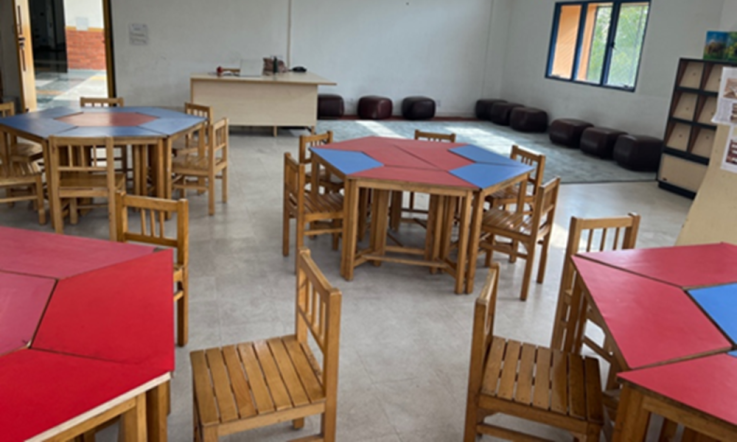Well conceptualised driving questions help to improve the effectiveness of project-based learning. Here, ACER India researchers Dimple Sood and Dr Ashu Kapoor share the guiding principles for designing driving questions, based on their recent research.
Project-Based Learning (PBL) has gained significant prominence in recent years as an instructional approach that aligns with modern educational goals.
While PBL lacks a singular, precise definition, its proponents generally agree on several core features (Larmer & Mergendoller, 2015). At its essence, the PBL approach shifts the focus from passive learning to active, student-centred inquiry.
This instructional approach is widely considered effective in developing capabilities such as critical thinking, problem solving, interpersonal communication, cooperation, leadership, teamwork, innovation, and creativity (Hakkinen et al., 2017).
The significance of PBL lies in its capacity to simulate real-world challenges by immersing students in hands-on projects that demand active engagement. It encourages students to explore, inquire, and create tangible solutions. As a result, students don't just absorb information they actively construct their own understanding. PBL also integrates multiple subjects, helping students see the broader context beyond isolated topics.
Laying the foundation for PBL
The effectiveness of PBL, however, hinges on teachers’ ability to define a key driving question and design projects around it. This question lays the foundation for PBL by guiding inquiry, sparking curiosity, and providing a meaningful context for learning.
The central driving question serves as the core catalyst, guiding and shaping the learning experience in PBL. An effective driving question is critical because it:
- sets the overall direction for the project and guides both teachers and students by defining the purpose and focus
- ensures that learning remains cohesive by keeping all activities connected to a meaningful goal
- enhances student engagement by igniting curiosity, making students more invested in their learning
- relates to authentic, real-world challenges, making learning relevant and applicable.
Considerations for teachers
Teachers can lay the foundation for a successful learning experience when the driving question is well conceptualised. Crafting a well-defined driving question is no simple task. To create a driving question that is engaging, meaningful and inquiry driven, teachers need to consider several key elements.
Open-ended: The question should invite multiple correct answers, encouraging exploration and critical thinking. It should not have a single ‘correct’ response, rather promote diverse perspectives, allowing students to contribute their own ideas and insights, much like viewing a topic through a kaleidoscopic lens.

Aligned with learning goals: The driving question should not merely repeat content from a textbook, rather connect to broader learning objectives. It should inspire students to acquire both domain specific competencies and essential skills such as collaboration, communication, and problem solving.

Encourages inquiry and engagement: The question should spark curiosity and invite students to delve deeper into the topic, guiding them to research, explore, and engage actively. The answer should not be already known and be based on facts but investigated before answering.

Real-life challenges or issues: The question should reflect real-world problems or challenges, providing students with an authentic context for learning. It should not be confined solely to curricular concepts or be too vague or philosophical.

All the above components need to be considered to craft an effective driving question.
From broad curricular themes to specific driving questions
While key considerations provide the theoretical foundation for writing a driving question, teachers often struggle with the process of transforming broad curricular themes into meaningful, actionable questions. Successfully implementing PBL hinges on turning broad curricular themes into focused driving questions that guide student inquiry and engagement. For a better understanding of how this can be done let us look at the example below.

A closer look reveals that the focus of the driving question here is on the how and why aspect of the broader project theme, rather than simply answering a question of what, where, or when. The key to transforming any broad curricular theme into a meaningful driving question lies in adding meaning and depth to context.
Meaningful learning in PBL is achieved when driving questions are thoughtfully crafted and placed at the core of the project. And who are better than teachers to guide this process and shape the questions that ignite curiosity and foster deep learning.
References
Buck Institute for Education. (2023, May 30). Gold standard PBL: Essential project design elements. PBL Works. https://www.pblworks.org/blog/gold-standard-pbl-essential-project-design-elements
Häkkinen, P., Järvelä, S., Mäkitalo-Siegl, K., Ahonen, A., Näykki, P., & Valtonen, T. (2016). Preparing teacher-students for twenty-first-century learning practices (PREP 21): a framework for enhancing collaborative problem-solving and strategic learning skills. Teachers and Teaching, 23(1), 25–41. https://doi.org/10.1080/13540602.2016.1203772
Larmer, J., Mergendoller, J. R., & Boss, S. (2015). Gold standard PBL: Essential project design elements. Buck Institute for Education.
With a colleague, or group of colleagues, choose a topic that you’re planning to teach this year. What is the broad curricular theme?
Work together to create a focused driving question to guide student inquiry and engagement, paying particular attention to the 4 considerations for teachers shared by Dimple Sood and Dr Ashu Kapoor in this article.



